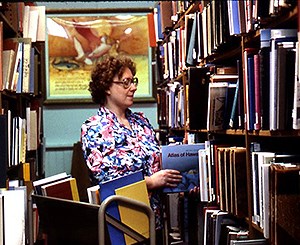Open call ending! Call for submissions for winter '25-26 issue ends January 9, 2026.
Who writes for Park Science?
Park Science magazine welcomes submissions from employees, interns, and volunteers with the National Park Service and its partners. We also consider submissions from external authors. We consider submissions at any time on any subject related to natural, cultural, social, or physical science conducted in national parks or on other public lands.Jump to a section
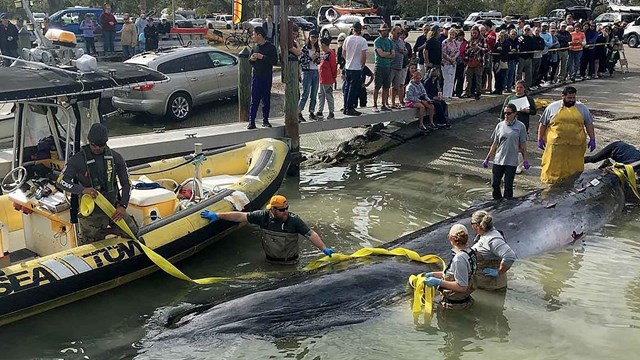
What we cover, our audience, and our goals.
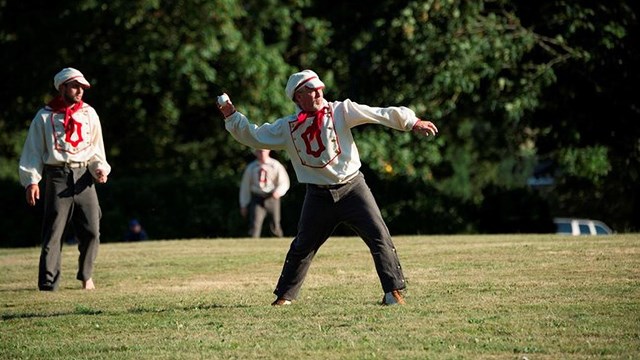
Submit a pitch.
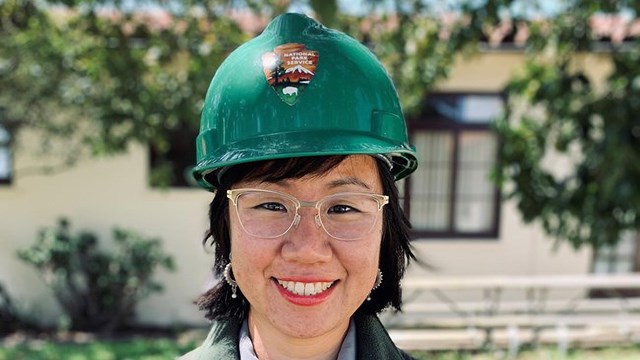
Descriptions and examples.

Content, format, style, copyright, reading level, writing for the web, and accessibility.
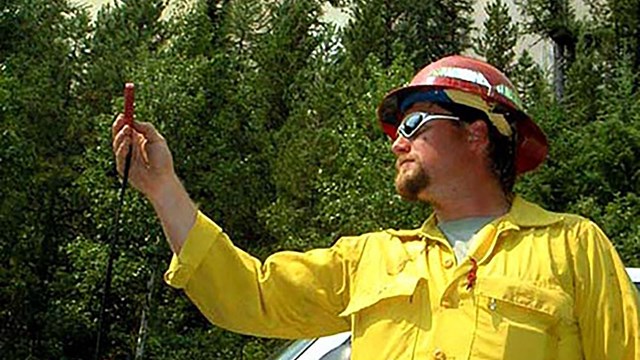
How we evaluate your submission.

Rivers and other aquatic environments. Hidden places. Strange, wonderful creatures. Why the timing of wildflower blooms matters.
About the Magazine
Park Science is the flagship, online-only science magazine of the National Park Service. Each issue is a curated collection of original stories by different contributors. Contributors come from a variety of occupations across the NPS and beyond. Park Science gives authors a unique, highly visible platform for showcasing their work.

What We CoverPark Science covers stories that illustrate how science informs and advances the National Park Service’s mission. |
Our AudienceWe appeal to readers who are curious about science and passionate about preserving public lands. |
Our GoalsWe want our readers to know how vital science is for managing national parks. We aim to educate, inspire, and entertain. |
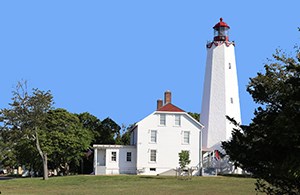
Cultural Resource Articles Welcome!
Park Science welcomes stories about historical research and documentation, interdisciplinary work on a landscape level, archeology, and anthropology, among others.
Contact the Editor
Marie Lawrence, Park Science EditorWhere to Begin and What to Expect

Pitch Your Idea before Submitting an Article, Podcast, or Video
Before you submit to the magazine, please pitch your idea to the editor (see steps below).
PLEASE NOTE: Material for Park Science magazine must NOT be previously published verbatim elsewhere, including on nps.gov.
STEPS TO PITCHING:
Authors internal to the U.S. Department of the Interior: click here to submit a pitch. You may also use the method below if unable to access this link.
All other authors:
- Contact the editor for access to the online pitch form (preferred)
OR
- Read the guidelines and article requirements on this page.
- Write a one or two-page pitch with the following information:
- Preliminary story title (brief statement of your story's main point in plain language).
- National parks, NPS units, or other public land units you will mention in your story (four-letter NPS park codes are fine).
- Your story topic.
- Main source article. ONLY for Park Science "In Brief" stories that summarize and interpret a recently published research paper (see article guidelines in the Types of Submissions We Accept section). Otherwise, put N/A).
- Section of the magazine you are submitting to (In Brief, etc.).
- Main points of your story:
- Think of this section as a four-paragraph abstract or mini version of your story written for an audience of non-specialists who don't work for the federal government (for example, define or replace specialized terms).
- Start with a first paragraph that outlines the problem (source of conflict, drama) then states briefly how you or the story's "heroes" resolved it (the "and...but...therefore" method is useful here). End the first paragraph with a statement summarizing or hinting at the main points or results.
- In the next two paragraphs, summarize the methods used, then key results (although not explicitly named as such). In the last paragraph, sum up the insights gained as they relate to answering the questions or addressing the issues posed in the first paragraph. Paragraphs should be concise (five or six lines each ideally). Emphasize specific and concrete goals, methods, and results, and avoid vague, general statements.
- As Park Science is a science magazine, focus on the scientific, technical, or scholarly aspects of your story, but be sure to make clear in concrete terms why your work is important to the broader magazine audience. Use first person (I, we, me, my, our) when talking about yourself or your own work. Include URLs ("https://...") for hyperlinks to authoritative source material to back up your statements.
- Why your story is important to the NPS, to parks or other public land units, and to visitors; its impact on them.
- Who you plan to interview for quotations that support or explain your points. Required for Features and In Brief article types; optional for others. Please note: You cannot quote yourself. Quotations should be from persons other than the authors. They should be from people you interview, not from previously published sources.
- Who you plan to interview for quotations that provide an alternate (and potentially critical) perspective. Optional.
- Each submission must be endorsed by a current park superintendent, unit chief, or resource manager. Please give the name and affiliation of the staff member endorsing your submission.
- Copy and paste your pitch into the "Your Message" box of our general contact form (omit your physical mailing address).
What to Expect
- Park Science magazine adheres to federal plain language guidelines. We take these very seriously.
- Your pitches and articles will likely change considerably during the editorial review to fulfill the magazine's readability and style requirements. Nevertheless, we strive to use your words as much as we can.
- During the review, the editor is your advocate. She will work with you and on your behalf to give your pitch and article the best chance of being accepted.
- The review process starts with pitching your idea and ends with publication. The magazine receives many submissions, and the editors and board review them in the order received. Editorial review time depends on how many submissions we get and where yours is in the queue. Each submission has its own schedule. We respond to all submissions, but it could take a long time to hear back from us. Please contact the editor if you would like to know where your submission is in the queue.
- Authors should be reasonably available to respond to editor and board reviews in the months leading up to publication (the summer issue is published in June-August and the winter issue in November-January). If you're going to be offline for significant lengths of time, please inform the editor in advance.
- Most authors who stay the course during the editorial review are pleased with the final result. Many view the process as a valuable opportunity to learn how to better communicate science to a broader audience.
We Can Help You
Do you have a good story to tell but feel you don't have the expertise to write it in the narrative style we are looking for? Once you start the submission process, the editor will work with you closely to hone your pitch. If your pitch is accepted, the editor will also help you craft your story. We aim to give you the help you need to publish your article in Park Science.
Use the Examples
If you've never written stories like these, we recommend deconstructing one of the article examples paragraph by paragraph to see how it is done.
Types of Submissions We Accept

The Park Science Podcast
(About 5 to 20 minutes + 1 cover image)
The Park Science podcast covers stories about science-related events or scientific work done or published in external or internal sources, preferably (but not exclusively) in the last year. Stories should be energetic and dynamic, with transitions between sections in longer podcasts. Park Science podcasts may have many different formats, e.g., interview, conversational, monologue, or panel. They may also have an explicit structure, such as one with "acts."
Examples of Podcasts
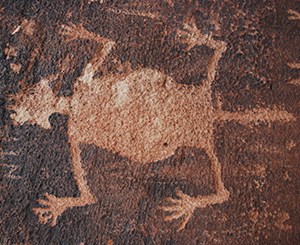
In Brief (News) Articles
(800 words or more + 1 or more images + 1 or more quotes)
Park Science articles in the In Brief section are news stories that report on recent events or work published less than a year ago. They should include at least one image and one quotation from a person (other than the authors) connected to the work.
Note: Please do not try to quote yourself. Quotations should be from your interviewees, not from other published works.
Examples of In Brief Articles
- How Worm Harvesters Are Helping Acadia Understand Its Declining Coastal Fisheries
- Sharing the Mysteries of Mortar
In Brief Article about a Recently Released Research Paper
(Approx. 800 words + 1 or more images + 1 or more quotes)
This is a special type of Park Science news article that does only one thing: it interprets a recently released academic paper for the broader Park Science audience. It otherwise has the same requirements as listed above for other types of In Brief articles. This article format is one commonly used by local and national media outlets for their own science stories.
Examples of In Brief Articles about Research Papers
- Strong Visitor Support for Steps to Limit Light Pollution
- A New Treatment to Control Plague in Wildlife Shows Promise

Feature Articles
(1,600 words or more + 2 or more images + 2 or more quotes + optional videos)
Feature articles cover recent events, ongoing work or published work that occurred within the last year. Feature articles are in-depth explorations of a topic, so it is important to talk about how the work fits into a larger frame of reference (e.g., the national parks, a field of study, science, society, the world). Ideally, feature articles should be around 1,600 words, but longer articles are acceptable if the subject's complexity or significance warrants it.
Feature articles should include at least two images and two quotations from persons (other than the authors) connected to the featured work.
Note: Please do not try to quote yourself. Quotations should be from your interviewees, not from other published works.
Examples of Feature Articles
- How We Rescued the Ascension of Our Lord Church in Karluk, Alaska, from Falling off a Cliff
- Why Sea Turtles Returned to Buck Island
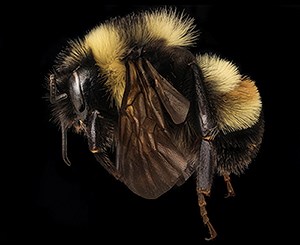
Picture This
(About 300 words + 1 or more videos or high-resolution images. Quotes optional)
Articles in the Picture This section are short, image-based articles. They tell the story behind the image. A submission for this section should include an exceptional picture or video with a compelling story (contact the editor for more about how to share images or videos). Artwork, infographics, animations, and other forms of visual representation are also acceptable for this section under the conditions listed below. You may include more than one image.
|
Pictures:
|
Videos:
|
- A Wilderness Treasure Hunt Unlocks Caribou Secrets
- Biofluorescence in Tiger Salamanders Documented in Rocky Mountain National Park for the First Time
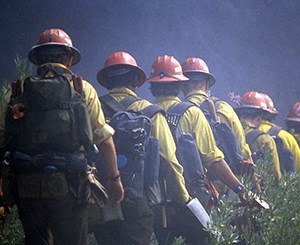
Perspectives
(800 words or more + 1 or more images. Quotes optional)
Submissions for Perspectives tend to have a strong point of view and can cover many different kinds of topics:
- Opinion editorials
- Summaries of original ongoing or recently concluded research
- Reactions to articles published in a previous issue of Park Science
- Biographies, tributes, or interviews
- Speculative essays on subjects relevant to science conducted in parks
These topics are not all-inclusive. If you are uncertain whether your topic is suitable for the Perspectives section, you can discuss it with the editor during the pitch review.
Examples of Perspective Articles
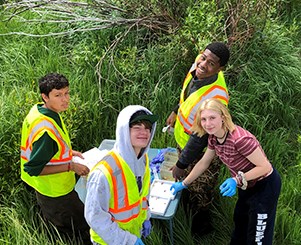
Educate and Interpret
(Feature-type articles: 1,600 words or more + 2 or more images or videos [see the Features section on this page for more information about this type of article]. Lesson-type articles [Grades 8-12]: 800 words + 1 or more images or videos. Quotes optional for either format)
Park Science welcomes submissions from educators, education interns, and interpreters about STEM projects, events, or teaching tools related to national parks.
There are two main types of educate and interpret articles in Park Science:
- Feature-type article that describes a project, event, teaching tool, or work done
- Hands-on lesson (Grades 8-12) that explores a public land-related science problem or explores questions raised in one of the articles in Park Science magazine.
These two types can be combined into one submission, with a hands-on lesson that builds off your feature-type article.
The more dynamic and interactive your article, the better.
Examples of Educate & Interpret Articles
- Feature-type article: For the Love of Monarchs: How We Joined the Push to Save a Beloved Butterfly

Park Science Vidoes
(About 4 to 20 minutes + 1 cover image or .gif)
Videos longer than three minutes should be submitted to this section. Park Science videos cover stories about events or work done or published in external or internal sources, preferably (but not exclusively) in the last year. Park Science seeks exciting, moving, or entertaining film stories with an authentic voice. Videos should be
- 1920 by 1080 (16:9)
- .mp4 format
- Have clearly identified captions and credits
- 508-compliant

The Puzzler
(800 words or less + 1 or more images or videos)
Park Science puzzlers are challenging puzzles for adults and curious kids (8-12th grade). These can take almost any form. Puzzlers that are meant to be played should be convertible to a playable format that is also accessible to visually impaired players.
Puzzlers should be clever and fun. Interactive puzzles are especially welcome. We will work with you to share it interactively on nps.gov.
A puzzler could report on a game used in a research project or feature one created to explore a current theme in the magazine or on nps.gov. Crossword puzzles, paper-folding puzzles, historical games, printable board games, number games, and riddles are all excellent choices.
Requirements for All Submissions
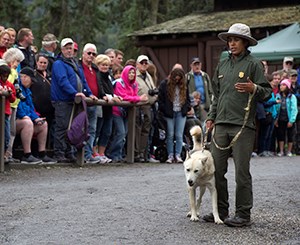
Content
Articles in Park Science translate specialized subject matter and primary source material into everyday language for our diverse audience. Submissions to Park Science should be written in a relatable, journalistic manner, where the narrative is like that of a novel or short story.
Please look at the examples in Types of Articles We Accept. It can be helpful to deconstruct an example paragraph by paragraph.
We encourage you to include videos, audio files, or other dynamic or interactive features compatible with the NPS's content management system. These should be exclusive to Park Science (not published elsewhere).
Your submission should demonstrate the important relationship between science and national parks. Think about how your article could do the following:
- Assist park managers in protecting park resources.
- Follow current NPS themes or address current issues that park and resource managers face.
- Promote public understanding of the challenges our national parks face.
- Promote public understanding of how scientific research can help address those challenges.
- Promote public understanding of NPS values.
- Show how what we learn in parks can advance scientific knowledge.
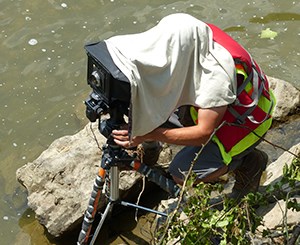
Format
Please format your article as follows:
- Identify the article type.
- Submit as a Microsoft Word file.
- Give names for all authors at the beginning of the article. Identify the corresponding author (our point of contact).
- Keep formatting in the document to a minimum, just enough to distinguish headings, captions, etc.
- Send images and videos as separate attachments. Proper safety practices and NPS attire (for employees) should be shown in the photos or videos.
- Pictures where a person is the main focus should have the subject facing the camera, engaging with the reader.
- Please submit pictures at the highest resolution and largest size possible.
- Send illustrations in the file format that was used to create them.
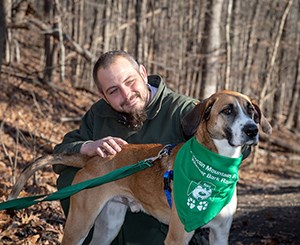
Editorial Style
Park Science follows the Harpers Ferry Center Editorial Style Guide, Chicago Manual of Style, Associated Press Stylebook, and American Heritage Dictionary.
- Embed source links in the appropriate text. Park Science stories do not list references at the end as done in more technical articles. See article examples in the sections above.
- Figures and tables should not be labeled as such or numbered; describe them sufficiently in the captions so they are understandable without reading the narrative.
- Please do not include figure or table callouts (e.g., Fig. 1). Refer to figures, tables, or other images descriptively in the narrative.
- Images and their captions should help tell the story, illustrating or expanding on the narrative.

Copyright
Once your article, podcast, or video is published on nps.gov, it will be in the public domain. Public domain information may be freely distributed and copied. We request that users acknowledge the NPS as the source of the information, but they may choose not to do so. When writing for Park Science, even if in the public domain, please do not copy verbatim what others have published or what you yourself have published in another forum (including elsewhere on nps.gov), unless you are quoting from those sources. Articles for Park Science should be fresh and unique.
With few exceptions, works such as photos or audio created by government employees while on work time are public domain and safe to use. If you are uncertain, check with the park or person who created them. If they are not in the public domain, please ask the creators to fill out the NPS photo/audio/video release form. Send this form to the editor before the article, podcast, or video is published in Park Science. This form releases the work to the public domain.
If the creator wishes to retain copyright, ask them for written permission to use the work in Park Science magazine. Send a copy of the permission to the editor before publication.
If the creator asks you to sign any kind of license agreement, contact the editor.
The copyright on anything published before 1923 has usually expired, so anyone can use it how they would like. Other authors sometimes release their works into the public domain. Online libraries like Project Gutenberg, Internet Archive, the Flickr Commons, and MusOpen have material that's free to use. But check the permissions before using.
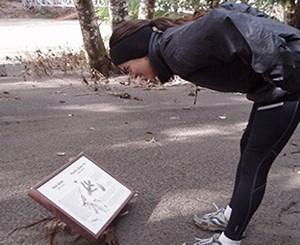
Reading Level and How to Check It
Park Science magazine follows federal plain language guidelines. Articles for Park Science should be written in plain language at an 8th to 12th grade reading level.
Complex subjects can be explained at this level by using active voice, shorter sentences, shorter paragraphs, and defining specialized terms (or replacing them with their definition).
You can check the reading level of your writing by using a simple Microsoft Word tool:
Step 1: With your document open, go to File > Options > Proofing.
Step 2: Under When correcting spelling and grammar in Word, make sure Mark grammar errors as you type is selected. Select Show readability statistics.
Step 3: Click OK or Cancel to return to your document.
Step 4: Go to Review > Editor (or Spelling & Grammar for older versions of Word) to see readability statistics once Word has finished checking your spelling.
You should aim for a Flesch Reading Ease score of 50 to 70 and a Flesch-Kincaid Grade Level of 8 to 12.
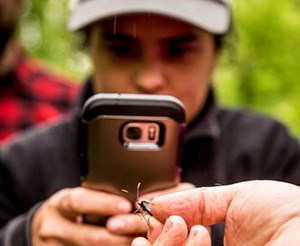
Writing for Web Audiences
Web audiences read differently from print audiences. They scan the page rather than read every word. To accommodate this, your article should try to observe the following:
- Shorter sentences
- Fewer sentences per paragraph
- One idea per paragraph
- Meaningful headings
- Bulleted lists
- Most important information first
- Descriptive links (i.e., not just “Click Here”)
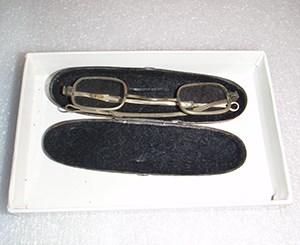
Accessibility
By law, all content published on nps.gov must be accessible to persons with disabilities. You can exert some control over how this is done and assist Park Science staff in meeting this requirement by doing the following:
- Make sure your conventional tables2 are simple, with clear column headings and no merged cells.
- Provide captions and alternate text for all images.
- Provide captions and audio descriptions for videos.
- Provide transcripts for audio files.
2 If you have a dynamic or interactive way of showing tabular data, we will work with you to see if we can display it on nps.gov.
Submission Review

Before You Submit an Article
Before you submit an article to Park Science, please ask someone in the National Park Service (or equivalent person in the land-management agency related to your story) to review it. This should be someone who is familiar with your project and has expert knowledge of the subject matter. Please state at the top of the article who reviewed the article:
- Park superintendent, resource manager, or interpretive manager
- Associate regional director for natural resources
- Natural Resource Stewardship and Science Directorate program manager or division chief
- Inventory and monitoring network coordinator
- Cooperative ecosystem studies unit research coordinator
- Research learning center director
- Subject-matter expert
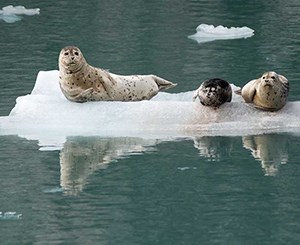
Park Science Review Process
The Park Science editor reviews all submissions, whether they are pitches or articles. The editor will ask you questions or recommend changes if necessary. Once the editor has approved your pitch or article, the Park Science editorial board will review it.
The board will likely also have comments and questions, so your submission may go through several rounds of review. Until the board has approved your article, there is no guarantee it will be published.
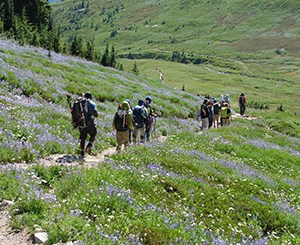
About Peer Review
Although articles in Park Science are reviewed by the editor and editorial board, the magazine is not a peer-reviewed scientific journal of primary research results in the conventional sense. Articles in Park Science typically cite, translate, and interpret primary material for our diverse audience. The magazine's narrative style is closer to science journalism, similar to what you would find in the science section of major newspapers or in "popular science" magazines.
Last updated: January 1, 2026



